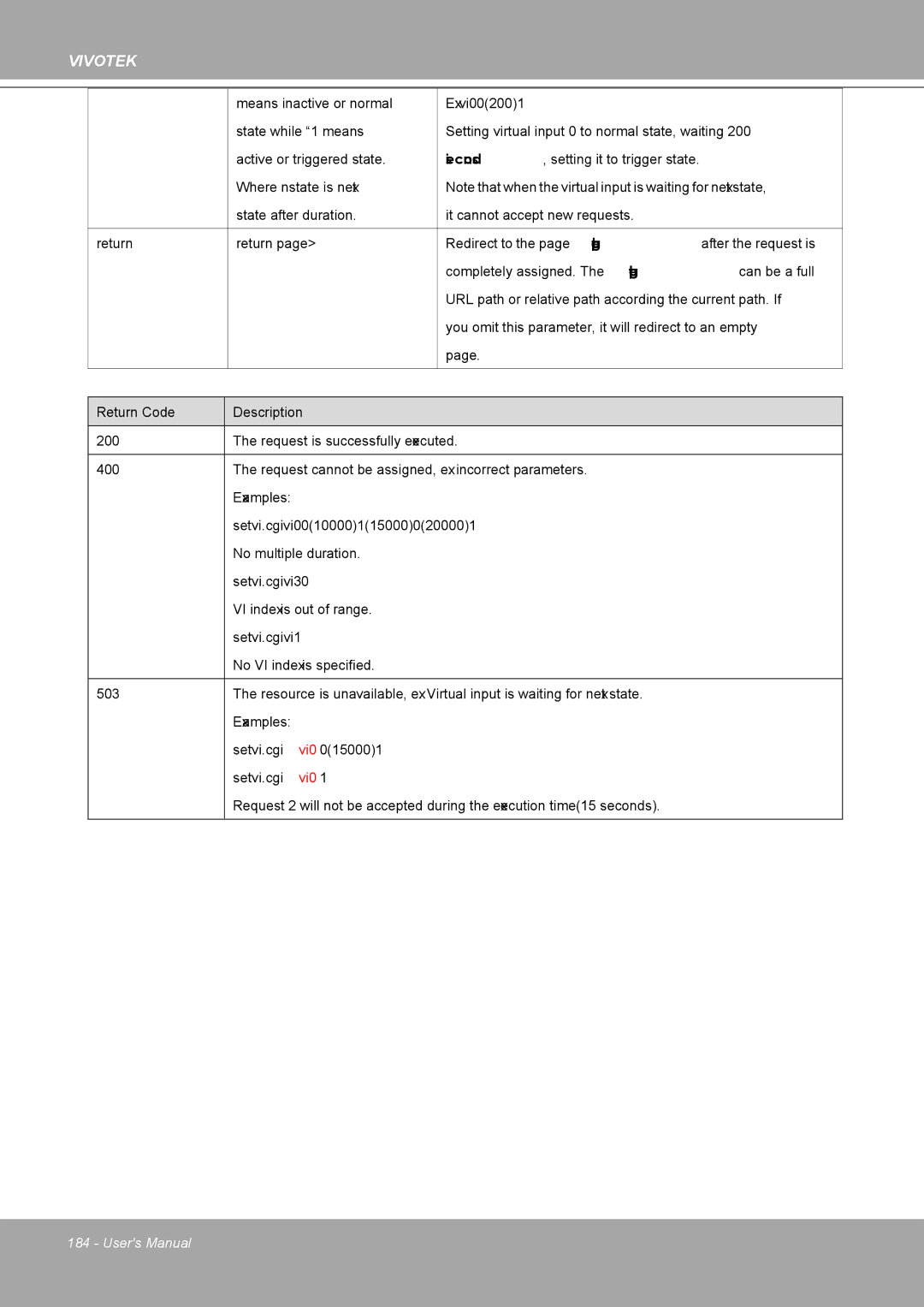
VIVOTEK
|
|
|
| means inactive or normal | Ex: vi0=0(200)1 | |
|
|
|
| state while “1” means | Setting virtual input 0 to normal state, waiting 200 | |
|
|
|
| active or triggered state. | milliseconds, setting it to trigger state. | |
|
|
|
| Where "nstate" is next | Note that when the virtual input is waiting for next state, | |
|
|
|
| state after duration. | it cannot accept new requests. | |
|
|
|
|
|
|
|
| return |
| <return page> | Redirect to the page <return page> after the request is | ||
|
|
|
|
| completely assigned. The <return page> can be a full | |
|
|
|
|
| URL path or relative path according the current path. If | |
|
|
|
|
| you omit this parameter, it will redirect to an empty | |
|
|
|
|
| page. | |
|
|
|
|
|
|
|
|
|
|
|
|
| |
| Return Code |
|
| Description |
|
|
200 |
|
| The request is successfully executed. | |||
400The request cannot be assigned, ex. incorrect parameters. Examples: setvi.cgi?vi0=0(10000)1(15000)0(20000)1
No multiple duration. setvi.cgi?vi3=0
VI index is out of range. setvi.cgi?vi=1
No VI index is specified.
503The resource is unavailable, ex. Virtual input is waiting for next state. Examples:
setvi.cgi?vi0=0(15000)1 setvi.cgi?vi0=1
Request 2 will not be accepted during the execution time(15 seconds).
184 - User's Manual
